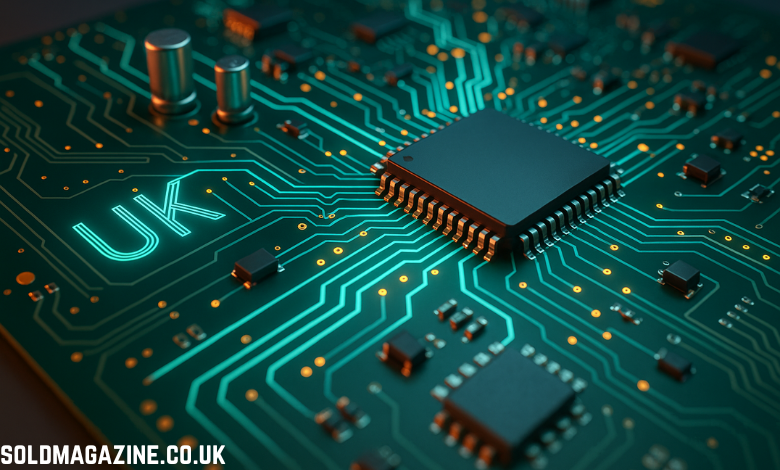In today’s rapidly evolving electronics industry, precision and performance are everything. From smartphones and medical devices to smart cars and renewable energy systems, every modern innovation relies on a well-designed Printed Circuit Board (PCB). The rise of CAD (Computer-Aided Design) tools has transformed how PCBs are conceptualized, tested, and produced ushering in a new era of efficiency and reliability for UK electronics manufacturing.
With product design services increasingly adopting CAD-based electronic product design, companies across the UK are finding faster, smarter ways to create cost-effective, high-performance boards. Let’s explore how CAD-driven PCB design is reshaping the future of electronics production, reducing design errors, and enabling innovation at scale.
What Makes PCB Design So Critical in Modern Electronics?
A Printed Circuit Board (PCB) serves as the foundation of nearly every electronic product. It connects and supports electronic components such as resistors, capacitors, and microchips through conductive pathways etched into copper layers.
A single design flaw in a PCB can lead to device malfunction, performance issues, or even complete product failure. That’s why precision in electronic circuit board design is paramount.
CAD technology helps bridge the gap between conceptual design and real-world performance by providing accurate 2D schematics and 3D modeling capabilities. These tools allow engineers to visualize, simulate, and refine designs before production reducing costly mistakes and ensuring product reliability.
How CAD is Powering the Next Generation of PCB Design
The shift from manual drafting to computer-aided design (CAD) has completely revolutionized PCB development. Today, electronic product design services leverage advanced CAD tools to manage complex geometries, high-speed signal routing, and miniaturized components.
Here’s how CAD is driving the transformation:
- Enhanced Precision: CAD software allows for micron-level accuracy in trace layouts and component placement.
- Faster Prototyping: Engineers can quickly iterate on designs, simulate performance, and reduce time to market.
- Design Validation: Built-in error-checking and simulation features minimize electrical interference and routing conflicts.
- Collaboration: Cloud-based CAD platforms enable teams across different locations to co-design and review PCBs in real time.
Popular CAD tools for PCB design include Altium Designer, AutoCAD Electrical, SolidWorks PCB, and Autodesk Fusion 360 each helping UK designers streamline their electronic manufacturing workflows.
Why Are UK Electronics Manufacturers Adopting CAD-Based PCB Design?
The UK electronics sector is undergoing a significant transformation, with an increasing emphasis on digital design integration and manufacturing automation. According to Make UK, the UK’s manufacturing output contributes nearly 10% to the national economy, with electronics playing a vital role in growth.
Adopting CAD-based PCB design provides numerous competitive advantages for British manufacturers:
- Reduced Development Costs:
By detecting and resolving design issues in the digital phase, companies avoid costly rework or component wastage. - Accelerated Time-to-Market:
Quick design iterations mean products can reach the market faster, crucial in an industry where innovation moves rapidly. - Improved Product Reliability:
Simulation-driven testing ensures that final products perform efficiently in real-world environments. - Integration with Manufacturing:
CAD data integrates seamlessly with CAM (Computer-Aided Manufacturing) systems, ensuring smooth transitions from design to production. - Sustainability and Material Efficiency:
By optimizing PCB layouts, designers can reduce raw material usage aligning with the UK’s push for greener manufacturing.
What Are the Key Challenges in PCB Design Today?
Despite major advancements, PCB design using CAD still presents certain challenges for design engineers and product developers. Some of the most common include:
- Miniaturization: As electronics become smaller and more complex, achieving high-density layouts without compromising performance is tough.
- Thermal Management: Effective heat dissipation is critical to ensure circuit stability and longevity.
- Signal Integrity: High-speed designs are prone to electromagnetic interference, which can disrupt circuit behavior.
- Material Selection: The choice of substrates and copper thickness directly impacts manufacturing cost and performance.
- Supply Chain Constraints: Sourcing reliable components and materials can cause production delays.
By leveraging advanced CAD-based simulation and 3D modeling, engineers can visualize and test these constraints early, ensuring a more robust and manufacturable design.
How Does CAD Enable Smarter Electronic Product Design?
In modern electronic product design services, CAD is more than just a drawing tool; it’s a comprehensive engineering ecosystem that connects concept to reality.
Here’s how CAD enhances the product design lifecycle:
1. Conceptualization
CAD software helps create early-stage sketches and schematics that define component placement and signal flow.
2. 3D Visualization
Designers can transform 2D schematics into 3D PCB models, providing a complete view of how electronic components fit within an enclosure.
3. Simulation and Testing
Using built-in simulation tools, engineers test circuit performance under various conditions detecting potential signal or thermal issues before fabrication.
4. Collaboration and Revision
Cloud-based design systems allow engineers, manufacturers, and clients to collaborate in real-time, ensuring continuous improvement.
5. Production Integration
CAD files can be exported directly into CNC machines and automated assembly lines, streamlining manufacturing and reducing turnaround time.
Trends Shaping the Future of PCB Design in the UK
The UK’s engineering and electronics landscape is becoming increasingly digitally connected and AI-driven. Some of the top trends transforming PCB design include:
- AI-Assisted Design: Artificial intelligence helps optimize layouts, predict signal interference, and speed up complex routing tasks.
- IoT Integration: As more devices become connected, designers must create PCBs that handle wireless communication efficiently.
- Flexible and Wearable PCBs: The demand for flexible circuit boards is surging in medical, automotive, and consumer electronics.
- Sustainability: Eco-friendly materials and recyclable PCB components are becoming a new design standard.
- Additive Manufacturing: 3D printing for PCBs is emerging as a fast prototyping method, reducing costs and waste.
According to TechUK, over 70% of UK manufacturers are now investing in digital design and automation tools, signaling a bright future for CAD-based PCB engineering.
How to Choose the Right CAD Partner for Electronic Product Design
Choosing a reliable CAD design company is essential for ensuring accuracy, efficiency, and scalability. When evaluating your partner, consider:
- Experience in Electronic Circuit Board Design
- Proficiency with Industry-Leading CAD Tools
- Ability to Handle Multi-Layer PCB Layouts
- In-House Testing and Simulation Capabilities
- Collaborative Workflow and Transparent Communication
Partnering with the right team ensures your product design services are optimized for performance, manufacturability, and long-term innovation.
Conclusion:
As UK electronics manufacturing continues to embrace digital transformation, CAD-based PCB design stands at the heart of innovation. From reducing design errors and production costs to accelerating product development, CAD empowers engineers to create smarter, more reliable, and sustainable electronic products.
For businesses and startups seeking to stay ahead in this fast-paced industry, collaborating with a leading UK CAD design company can unlock new opportunities in product performance, efficiency, and design excellence.
The future of printed circuit board PCB design is here and it’s powered by CAD innovation.




